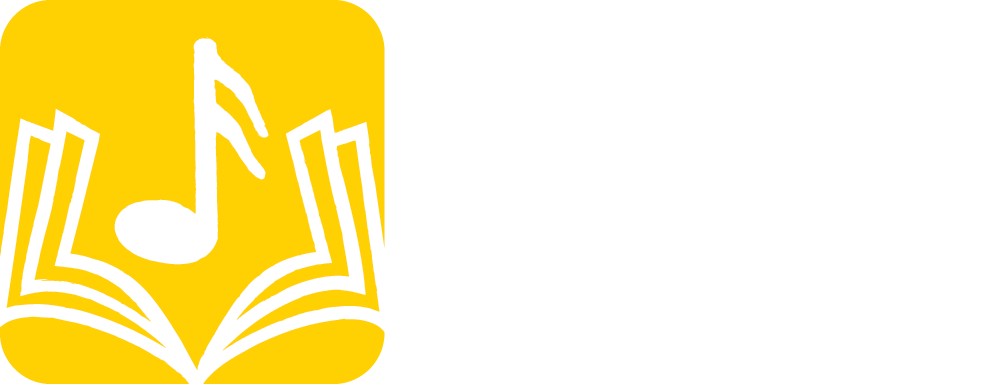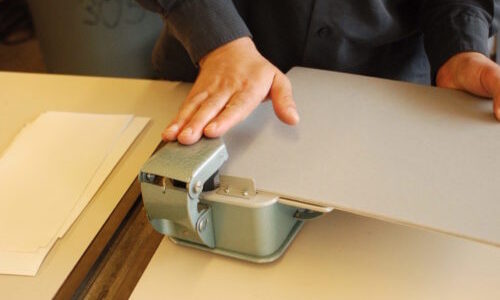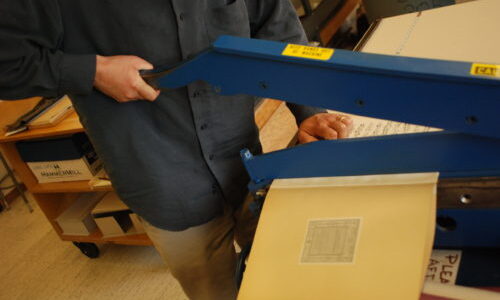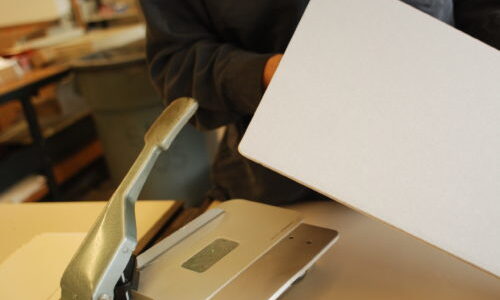The Sibley Conservation Lab supports the entire life cycle of of our circulating score collections – initial binding for the library shelves, repair of damaged materials, withdrawal of scores too brittle for use, and digital resurrection into sturdy new copies.
Designed in 1988 as an integral part of the New Sibley Library by Sion “Ted” Honea, Sibley’s first Conservator, and Mary Wallace Davidson, the Library Director at that time, the lab was a significant improvement on the binding and conservation facilities previously available. It remains the premier academic library facility for music preservation.
Now, under the care of Alice Carli, Conservator since 1995, the lab houses three distinct programs
Binding
Nearly all of the scores acquired by Sibley for its general collections must be bound before going out for circulation, since music tends to get much heavier use by each borrower than books do. All sheet music pamphlets and each part are sewn by hand into protective covers and sturdy binders, while thicker scores are sent out for library binding to exacting standards.
Conservation
Torn pages, pencil markings, loose bindings – even “the dog ate it” – may be repaired here. The Bindery has equipment for paper repair (including a soaking station), binding repairs and full rebinding, and mold remediation.
Preservation
When the first preservation assessment of Sibley Library was done in 1982, 57% of the circulating collection was determined to be brittle, the highest proportion the outside expert had ever seen. Since music, with its larger size formats, is inherently expensive to print, publishers were more likely to economize on paper quality. The Preservation Photocopy program that was started in the late 1980s (after Dr. Honea was satisfied that the new laser printing could be considered of archival quality) morphed into our current Sibley Digitization program around 2004. To this day we continue to scan brittle scores, which in many cases means that they suddenly move from circulation “restricted” to in-library use to being available worldwide at the touch of a button.
Summer Binding Course
Are you interested in learning to bind, repair and scan music? Alice Carli teaches an annual summer course, both on line and in person. While many of the students are librarians and conservators, the courses are also open to Eastman students. For more information, you may contact Ms. Carli at acarli@esm.rochester.edu.





















